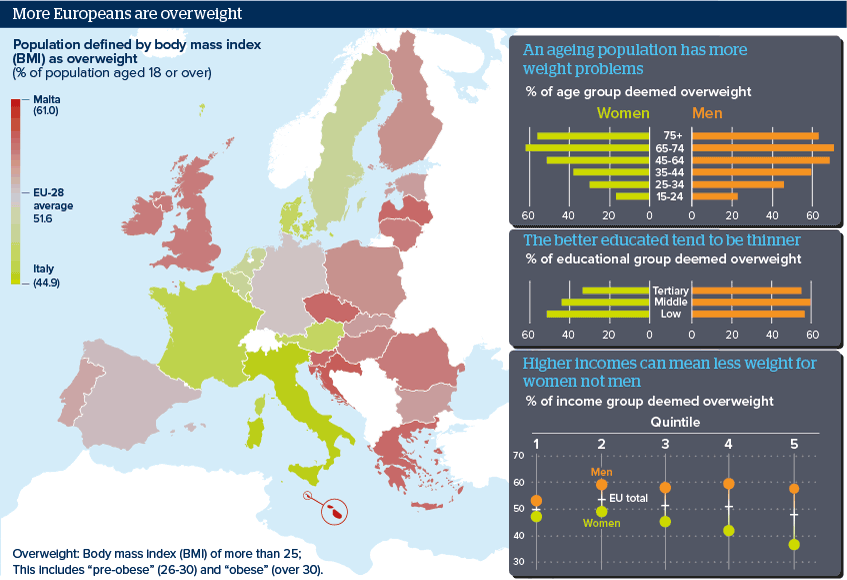Education could be an answer to Europeans’ weight gain
More than half of Europeans are now overweight, a problem particularly among poor, elderly men
Source: Eurostat
Outlook
No one factor is responsible for populations putting on weight although there seems to be a correlation with prosperity: the poorer eastern EU member states are catching up with the EU-15 in this respect, with Romania’s overweight population increasing the fastest during 2008-14. Men are more likely to be overweight than women, although the gap narrows with age. There are correlations with income and education levels, particularly for women.
Sedentary lifestyles are reducing physical activity and convenience foods are replacing healthy eating habits. The ‘Mediterranean diet’ is recommended, and Italy had the lowest percentage of overweight population in the EU in 2014 (45%), yet Malta (61%) came top and Croatia, Greece and Slovenia lay second, fourth and fifth respectively.
Impacts
- Impaired physical fitness could affect the employability of workers around traditional retirement ages.
- The incidence will rise of cardiovascular disease, type-2 diabetes, hypertension, coronary heart disease and some cancers.
- Leading the EU with a 46.4% pre-obese rate, Romania will not remain long at the bottom of the EU’s obesity table (9.4%).
See also
- Problems of obesity will spread in the EU’s east - Sep 16, 2021
- Government is yet to stem rise in obesity among Turks - Jun 11, 2020
- 'Fat taxes' will not halt Europe's obesity crisis - May 26, 2011
- More graphic analysis
